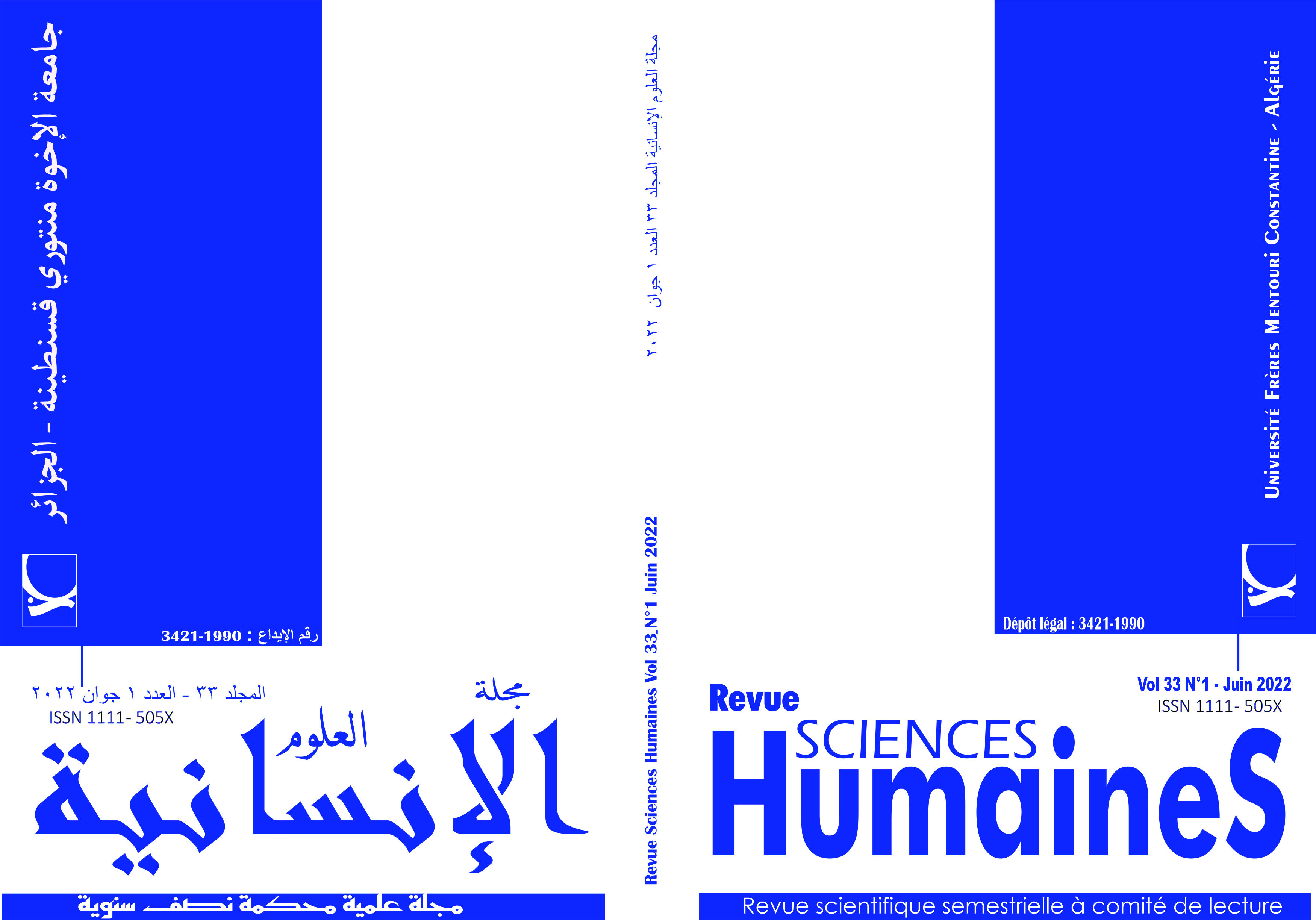Maïssa Bey’s Au commencement était la mer… and Hizya: toward a ‘writing of erosion’
Mots-clés :
youth, disillusionment, collapse, trauma, Algerian literatureRésumé
Maïssa Bey’s novels often hold confusing and sad closures that leave the reader with a sense of puzzlement and bitterness. As the stories in Au commencement était la mer… and Hizya unfold, the reader becomes the witness of the life of young women who go through a variety of experiences and hardships that leave little room for personal fulfillment. The falling apart environment, which is also reflected in the setting’s description, becomes to a large extent a reflection of the protagonists’ inner self. The author’s aesthetic choices further reinforce this dominating atmosphere. The present paper contends that the sense of bitterness and collapse, the heroines’ turmoil, the setting’s description, and the elaborated scripture where typography, division, and structure interplay, contribute in creating what I would like to call a ‘writing of erosion’; a writing that voices the daily tragedies of marginalized young generations with stifled voices and crushed dreams.
Téléchargements
Références
. Bonn, C. (2019) “Avant-propos” in. Houda Hamdi (ed.), Maïssa Bey : deux décennies de créativité, Paris, L’Harmattan, pp. 9-11.
. Ibrahim-Ouali, L. (Autunno 2002), “Ce quotidien ‘aux odeurs de violence et de mort’ algériennes sur le champ de bataille”, in. Francofonia, n°. 43, pp. 5-26.
. Belloula, N. (2006) Les Belles Algériennes. Confidences d’écrivaines, Média Plus, Constantine.
. Ruta, S. and Bey M. (Jul. - Aug. 2006) “The Rebel’s Daughter: Algerian Novelist Maïssa Bey” in. The Women’s Review of Books, vol. 23, no. 4, pp. 16-17.
. Brun, C. (2017) “L’Écriture pénélopéenne de Maïssa Bey” in. Contemporary French and Francophone Studies, 21: 3, pp. 282-289.
. Ali Benali, Z., Simasotchi-Bronès F., Maximin D., and Bey M. (juin 2009) “D’îles en îles, Antilles et Algérie : entretiens avec Daniel Maximin et Maïssa Bey” in Littérature. Passages. Écritures francophones, théories postcoloniales, n°. 154, pp. 43-52.
. Bey, M. (2012) Au commencement était le mer…, Alger: Barzakh. First edition: 1996
. Bey, M. (2015) Hizya, Alger, Barzakh.
. Bey, M. (2005) Surtout ne te retourne pas, Alger, Barzakh.
. Bey, M. (2006) Bleu blanc vert, Alger, Barzakh.
. Bey, M. Puisque mon cœur est mort, Alger, Barzakh.
. Stora, B. (2001) La guerre invisible : Algérie, années 1990, Paris, Presses de la Fondation Nationale des Sciences Politiques.
. Chevalier, J. and Gheerbrant A. (1990) Dictionnaire des symboles. Mythes, rêves, coutumes, gestes, formes, couleurs, nombres, Paris, Bouquins, First edition: 1982.
. Kaced, A. (2019) “The ambivalence of the mother-daughter relationship in Hizya” in Houda Hamdi (ed.), Maïssa Bey: deux décennies de créativité, Paris: L’Harmattan, pp. 135-150.
. Lacoste-Dujardin, C. (1985) Des mères contre les femmes : maternité et patriarcat au Maghreb, Paris, La Découverte.
. Howell, J. (2017) “Hizya” in. The Journal of North African Studies, 22:4, pp. 696-698.
. Maafa, A. (2019) “Le bovarysme dans Hizya: à la recherche d’une héroïne” in Houda Hamdi (ed.), Maïssa Bey: deux décennies de créativité, Paris, L’Harmattan, 2019, p. 209-219.
Téléchargements
Publié-e
Comment citer
Numéro
Rubrique
Licence

Cette œuvre est sous licence Creative Commons Attribution - Pas d'Utilisation Commerciale - Pas de Modification 4.0 International.

















